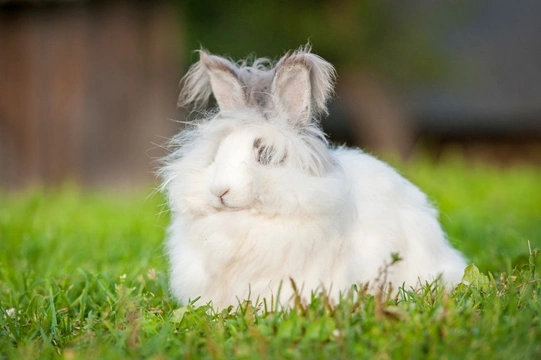
Grooming and caring for the coat of the Angora rabbit
The Angora rabbit is not only a loving and social pet, but also possesses a soft, luxurious coat that is finer than cashmere and can be spun on a loom to create fibre for knitting! This means that a significant number of Angora rabbit owners actively harvest their rabbit’s fur either to spin themselves or to sell! However, even if you simply want to keep your Angora as a pet and have no intention of knitting yourself a rabbit hair jumper, the coat of the Angora cannot simply be left to its own devices.
The Angora rabbit requires a significant amount of grooming and coat care to keep them healthy and in good condition, which is something that all potential Angora rabbit buyers should consider before making the decision to get one as a pet!
In this article, we will look at how to groom and take care of the coat of the Angora rabbit, how to harvest their fur, and some problems to watch out for. Read on to learn more.
Caring for the Angora coat
Regardless of whether or not you intend to do anything with your rabbit’s fur, you will still need to brush and groom them to keep them in good condition and remove their loose hair regularly!
This means grooming regularly throughout the year, and every three months or so when the rabbit sheds its coat, stepping things up a notch to keep up! A poorly cared for coat will soon become knotted and matted and begin to felt up, all of which will make your rabbit feel rather uncomfortable, and which may actually affect their health too.
For your rabbit’s grooming sessions, you should invest in a few pieces of kit including a slicker brush, a comb, a pin brush and a plastic brush, all of which are tools that can be readily found for sale for brushing cats and grooming dogs. A pair of scissors is helpful too, but these must of course be used with care.
How often you should groom your rabbit will depend on a range of factors, including how quickly their coat is apt to get into a mess when left unchecked. At a bare minimum, you should dedicate some time to grooming your rabbit thoroughly once a week, and more often if possible and this is well tolerated by your pet.
It is important that grooming is calm and pleasant for your rabbit, and not stressful or frightening for them, so work on this gradually over time.
For your general grooming sessions, it is important to comb the entirety of the coat from the roots to the tips, removing shed hair and taking care to pay attention to areas that are prone to matting up, such as the belly and behind the ears. Once you have worked out any knots with the comb, you can then use your brushes to groom the entire coat, removing loose hairs and stimulating the circulation, which can help with healthy fur growth.
If you find matted up areas in your rabbit’s coat, these can often be separated with your fingers, and then combed out gently once they have loosened. However, if the fur has felted up, you may need to use your scissors to very carefully cut it out of the coat, taking great care not to cut your rabbit’s skin.
Harvesting wool
Every three months or so, the Angora rabbit sheds virtually its whole coat, to grow in their new one. This is when you can harvest their wool to use if you wish, but even if you do not want to keep the wool, you will still need to remove the lost and loose hair!
This is usually undertaken by plucking the rabbit, and you will know when the time is right due to the amount of loose fur on your rabbit’s coat, and left around their home.
Use a blunt-tined brush to loosen off any wool that is ready to be removed, and then very gently pull it out of the coat with your fingers, ensuring that you do not tug on the skin or attempt to remove fur that is securely anchored. If your rabbit appears to be finding things uncomfortable or stressful, they may not be quite ready, so simply groom them and try again another day.
Wool block
It is vitally important to groom the Angora rabbit regularly, and to pay special attention to their coat when they are shedding, as Angora rabbits are prone to developing a condition called wool block if this is not done properly.
Wool block is similar to hair balls in the cat, and occurs when the rabbit’s own licking and grooming leads to a collection of lost hair gathering within the digestive tract, where it grows ever-larger and forms a ball of fur that can cause a blockage that will not pass naturally.
However, whilst cats can cough up their hair balls, rabbits cannot, and so such a blockage can be fatal if left unchecked. If your rabbit stops eating, this may be one reason why, and as this is a serious issue in and of itself for rabbits, merits an emergency trip to the vet.
Grooming your rabbit regularly, and paying particular attention to them when they are shedding hair is the best way to prevent wool block from developing.



